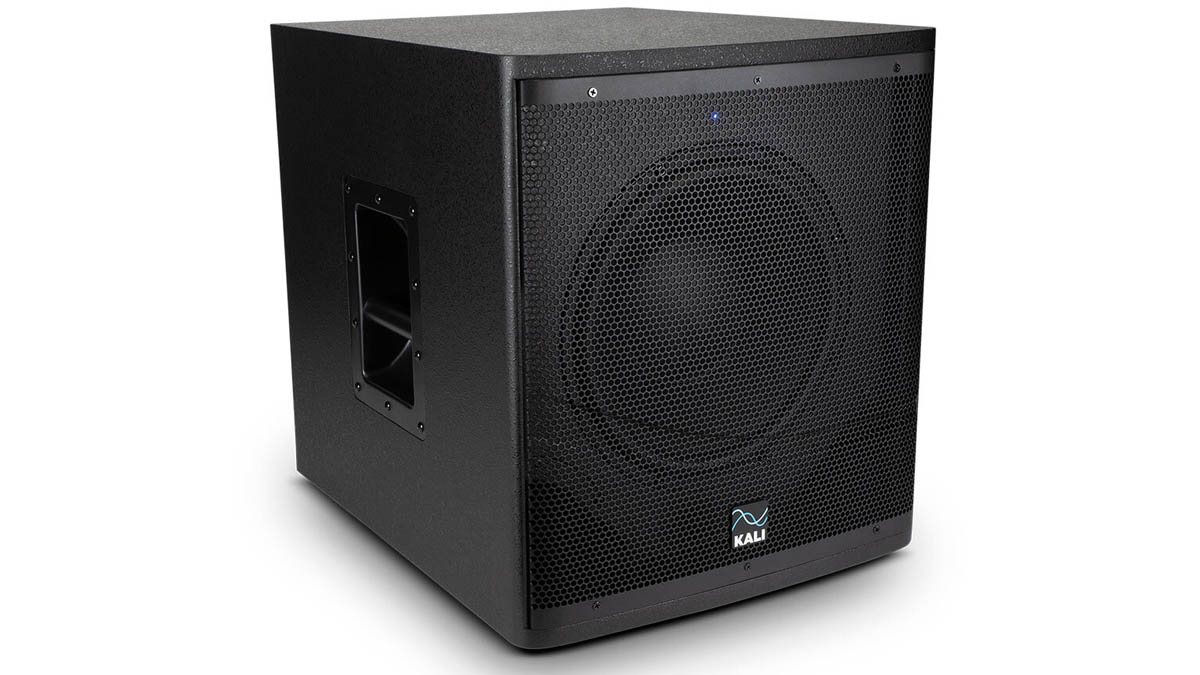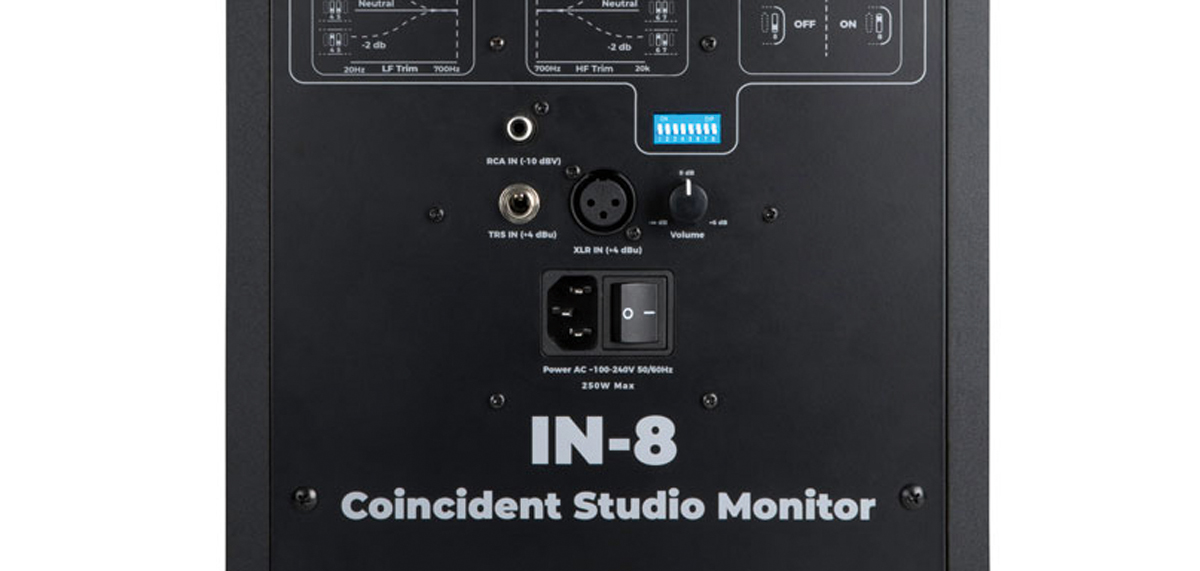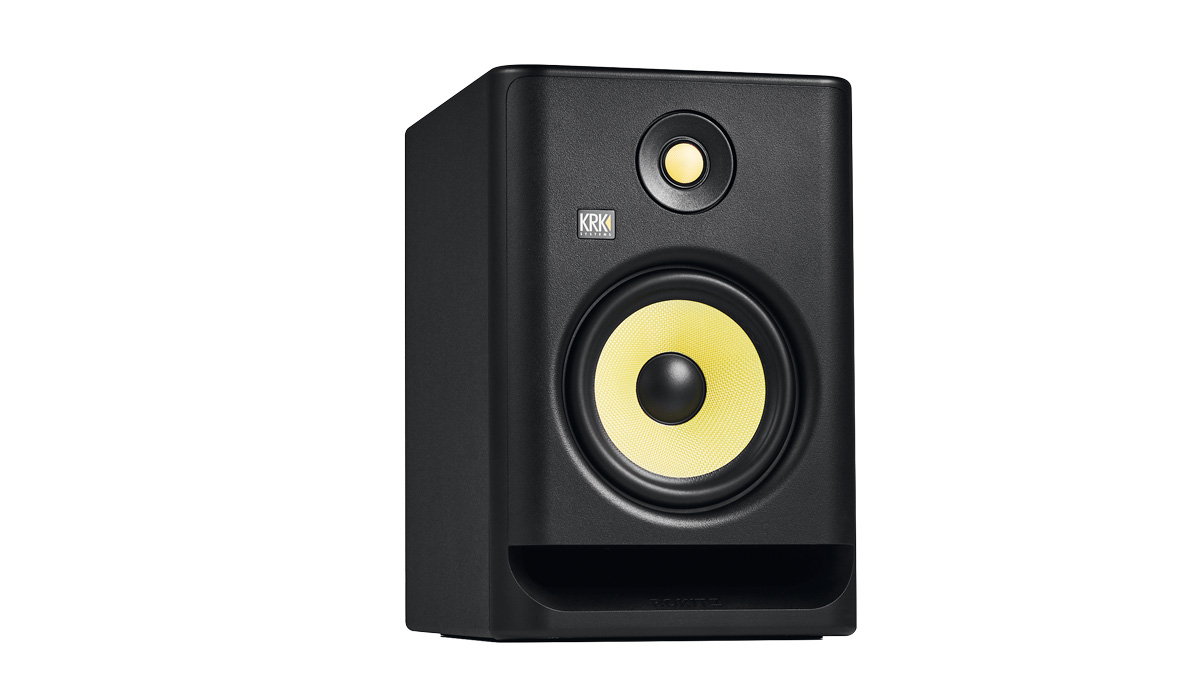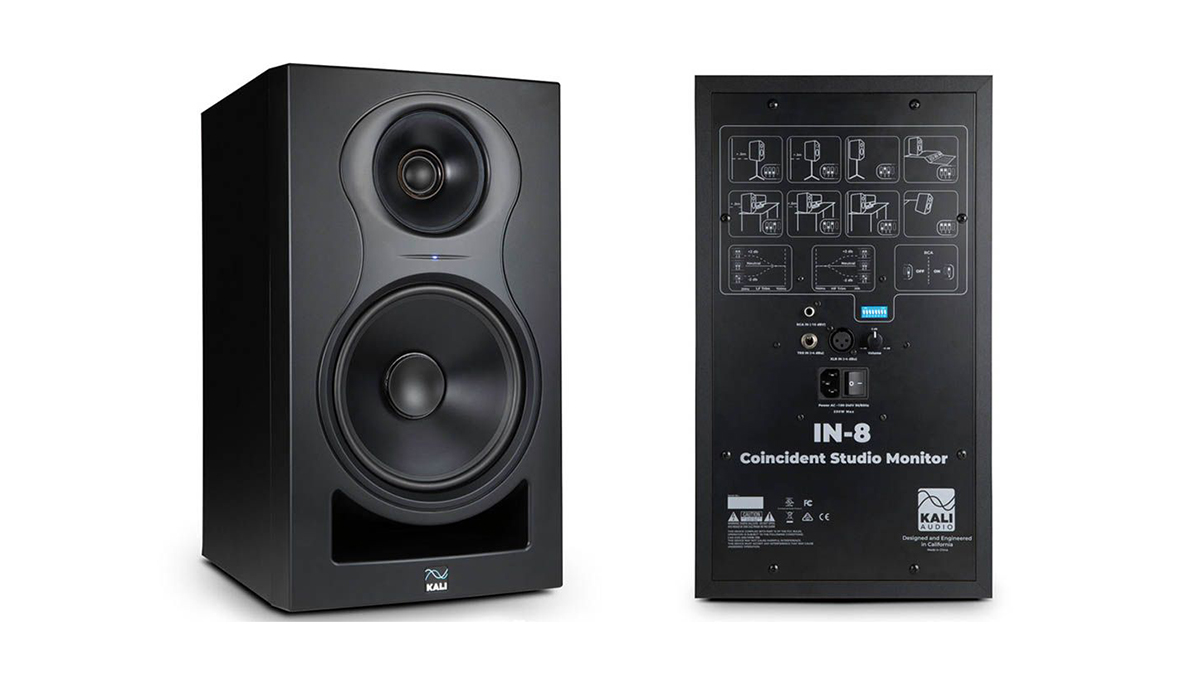MusicRadar Verdict
Kali Audio made a splash with the LP monitors and the IN-8s are just as dramatic a release. This is serious pro monitoring at a fantastic price. Highly recommended.
Pros
- +
Big, wide and spacious sound.
- +
Very easy to set up withflexible dip switch operation.
- +
Great value considering the sound.
Cons
- -
Overkill for very small studio spaces.
MusicRadar's got your back
What is it?
You may not have heard of Kali Audio and you can be forgiven. This Californian company have only been around for a couple of years but with their LP range of studio monitors, offer an incredibly detailed listening experience for silly money – the Holy Grail of studio monitoring, basically.
The LP range is named after Lone Pine, a charming-sounding town near the Kali Audio base and these new IN speakers maintain that wonderful ethos, named after Independence, a town that is ‘one up’ from Lone Pine on the map.
They also share the components, drivers and technology used in the LP speakers, so will they make as big an impact?
The LP range of speakers are two-way, meaning that they have just a woofer and tweeter to cover your bass and treble needs. The IN range are ‘one up’ on the map and one up with drivers, adding a third mid to join the dots between the same woofer and tweeter and home in on the mid range.
Interestingly this 4-inch mid driver is placed coaxially around the 1-inch tweeter, rather than in between the woofer and tweeter as you’d ind on most traditional 3-way speakers.
This design, say Kali, delivers a “stereo soundstage that presents the listener with a hyper-realistic level of detail. The soundstage that you hear will have every detail that’s present in the mix”.
The IN-8s are best suited to a space where you can really enjoy that fuller and wider sweet spot
That, dear readers, is monitoring in a couple of sentences. You want to hear all the detail, even the mistakes; in fact especially the mistakes so that you can correct them.
The IN-8s also boast other specs to back up the pro claims. There’s a front-firing port tube, as found on the LPs, that is designed to cut down the chuffing effect that you sometimes get from speakers where air is pushed out at different levels, creating noise. This helps cut that while maintaining a tight low-end response.
There’s also 140 watts of power, shared between 40 watts for the tweeter and mid-range drivers, plus another 60 for the woofer; a maximum Sound Pressure Level of 114dB (a big level indicating how loud they go before distortion kicks in) and a frequency response of 37Hz to 25kHz.
This is decent but should you wish to expend the low end, there’s also a new (and absolutely massive) subwoofer in the Kali range, the WS-12 [see boxout].
The [massive] WS-12 sub-woofer
Also delivered with IN-8s was the new WS-12 subwoofer. These types of speaker are designed to deliver more lower frequency detail, not, it must be said, more bass; they should simply give you a more accurate representation of what you already have.
Getting a decent subwoofer is a good option especially if you are mixing bass-heavy music genres. You will be able to, for example, separate your kicks and basslines with more precision if you can hear exactly where they are in the mix.
WS-12 is designed to complement the IN range and dips down to an incredible 23Hz with 100W of power and is great value at just $599.
We tried it with the IN speakers and the attention to detail down there is astonishing; not that you don’t get a great response already with the IN range, but this subwoofer presents you with an extra few Hz of detail and a more accurate picture.
Do we recommend it? A little like the IN-8’s themselves, WS-12 is overkill if your studio is small – this thing is huge – but it is a great option for bass producers.
The WS-12 and IN-8 combination is extraordinary and at a great price but there are many scenarios where the speakers on their own will do a grand job.

Performance and verdict
So specs-wise, we’re looking good so far, and setting up, we’re impressed too, as the ‘more for your money’ vibe continues. These are big speakers for starters, not too heavy (10.4kg each) but at 44.1 x 28.5 x 25.4cm (height x depth x width) they won’t suit tiny studios.
Setting them up is a breeze though. Kali say they are designed to be as easy to use as possible.
And besides, that coaxial design means they are best suited to a space where you can really enjoy that fuller and wider sweet spot and are really designed for spaces where up to three people can listen at the same time.
Setting them up is a breeze though. Kali say they are designed to be as easy to use as possible. There’s the flexibility of a trio of input types: RCA (for consumer grade inputs) plus TRS and XLR for more pro devices.
The only stumbling block for newcomers to monitoring might be the dip switches. These are a common setup feature found on studio monitors and allow you to tailor the speakers’ EQ response, depending on where and how you have them set up.
Before you go running for the hills, the beauty here (again, as with the LPs) is that you get diagrams showing you various speaker setups and then the corresponding DIP switch settings. You don’t even have to understand what you are doing – just switch the switches according to how you have the IN-8s set up.

In all our years testing monitors there is really no better feeling than playing a mix you have been working on through better monitors; just hearing the clarity, the extra width and extra dynamic range.
The only issue here was that we weren’t expecting this euphoric moment as these speakers come in at half the price of our reference monitors. At best we were expecting them to hopefully match the response of the more expensive speakers; instead they gave us that ‘wow’ moment anyway.
At first this was due mostly to the physical ‘size’ of the sound. These are big monitors so in our small-to-mid-sized space they not only pack a punch power-wise but also dimension-wise. It’s
like a wall of sound enveloping you in the most intoxicating way. But after that initial impact, it’s the detail that shines through. On our trusted (that is professionally mixed) tracks, we could enjoy the layers of bass being distinguished where necessary (rather than muddied up which you find on cheaper speakers).

• KRK Rokit G7
KRK’s Rokit monitors look and sound the best yet, and the RP7 represents an excellent balance of power, footprint and price.
• PreSonus Eris E8XT
The E8XT is a big, powerful monitor that doesn’t overstep the mark. Simple to set up and, importantly, excellent value for money.
And then there’s the width. You don’t often believe the claims with speaker manufacturers as very often the end results can be so subtle that you barely notice them, instead simply stroking your chin in a knowing way like you really did hear that extra 0.1dB in the high mids.
So here we weren’t really expecting that claimed greater sweet spot but we certainly got it, so much so we nearly wore our chair wheels out rolling around the studio space finding its limits. We’ve enjoyed reviewing the IN-8s so much that it almost pains us that we can’t recommend them to everyone.
Their girth, power and physical size will be too much for many small studios (who should consider the Lone Pines, which boast much of the tech in a smaller package). For anyone else, with a space less limited than their funds, we can think of no better speakers for this kind of money. Quite simply: extraordinary.
MusicRadar verdict: Kali Audio made a splash with the LP monitors and the IN-8s are just as dramatic a release. This is serious pro monitoring at a fantastic price. Highly recommended.
The Web Says
"The IN-8s were less fatiguing than the two-way monitors they replaced. Sitting back on the couch 3 meters away, where a lot of my clients like to sit and listen, the sound was more even than before, and that is a good thing! I’m recommending the IN-8s as an excellent yet inexpensive studio monitor for small mixing spaces. You’ll have crystal clear stereo imaging, along with a truthful and accurate representation of what you have recorded and mixed immediately."
Mix
"Though not without its quirks, there's no denying the IN‑8 is a huge slice of monitoring bandwidth for the money, and its dual‑coincident driver is exceptional. It's very much worth hearing."
Sound On Sound
Hands-on demos
Producer Benford
Chris Selim – Mixdown Online
Specifications
- Type: Studio monitor
- Key Features: 3-way design w/ coaxial midrange and tweeter, 8" woofer, low noise port tube; 140W Class D Power, 37Hz lower frequency response, < 1.4% System THD (94 dB @ 1M), Max SPL 114 dB.
- Contact: Kali Audio
Computer Music magazine is the world’s best selling publication dedicated solely to making great music with your Mac or PC computer. Each issue it brings its lucky readers the best in cutting-edge tutorials, need-to-know, expert software reviews and even all the tools you actually need to make great music today, courtesy of our legendary CM Plugin Suite.
“Excels at unique modulated timbres, atonal drones and microtonal sequences that reinvent themselves each time you dare to touch the synth”: Soma Laboratories Lyra-4 review
“I used everything I knew about music”: How Green Day exceeded expectations with their most ambitious song
YouTube just added AI tools that makes musicians, library music and video editors redundant











